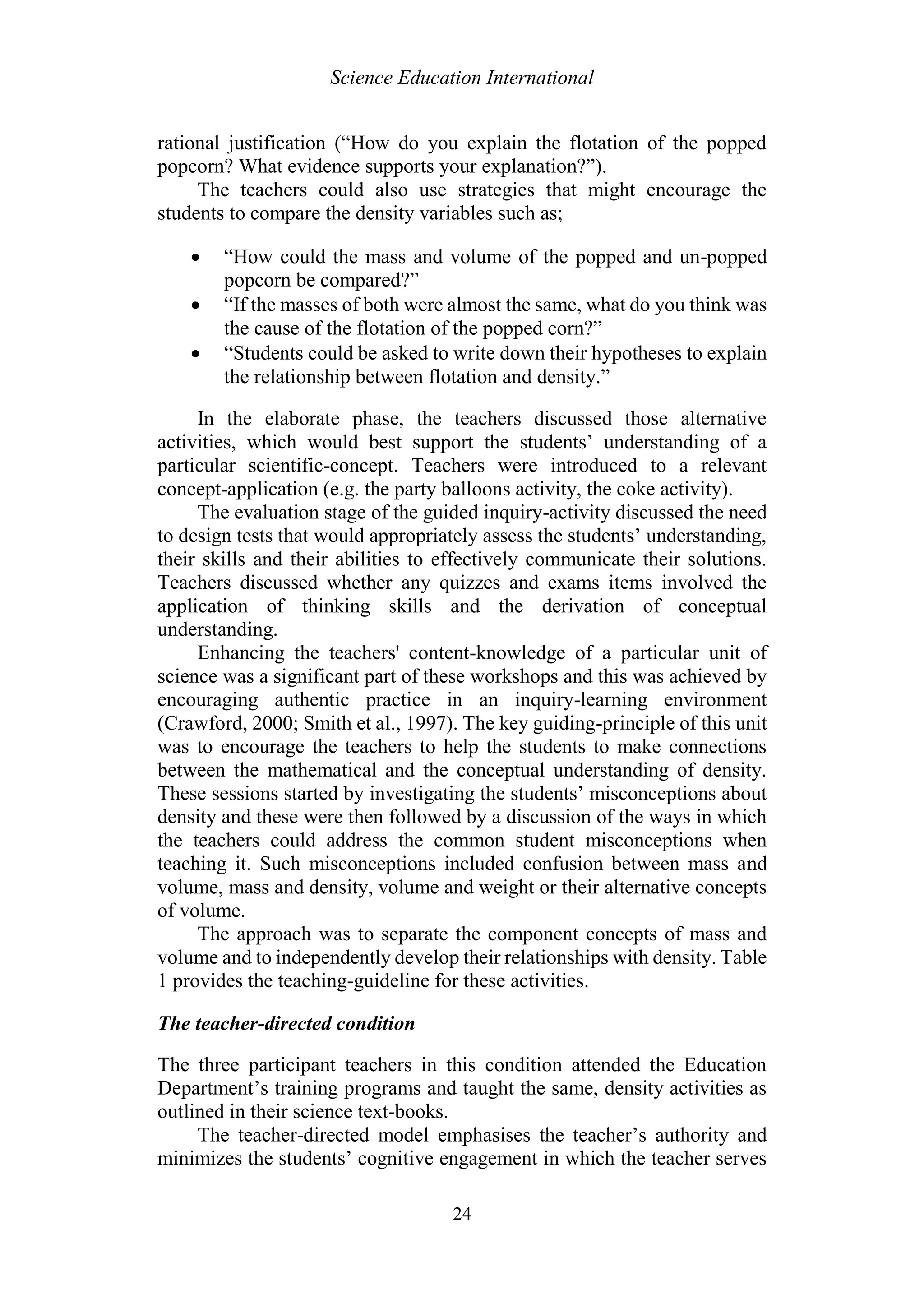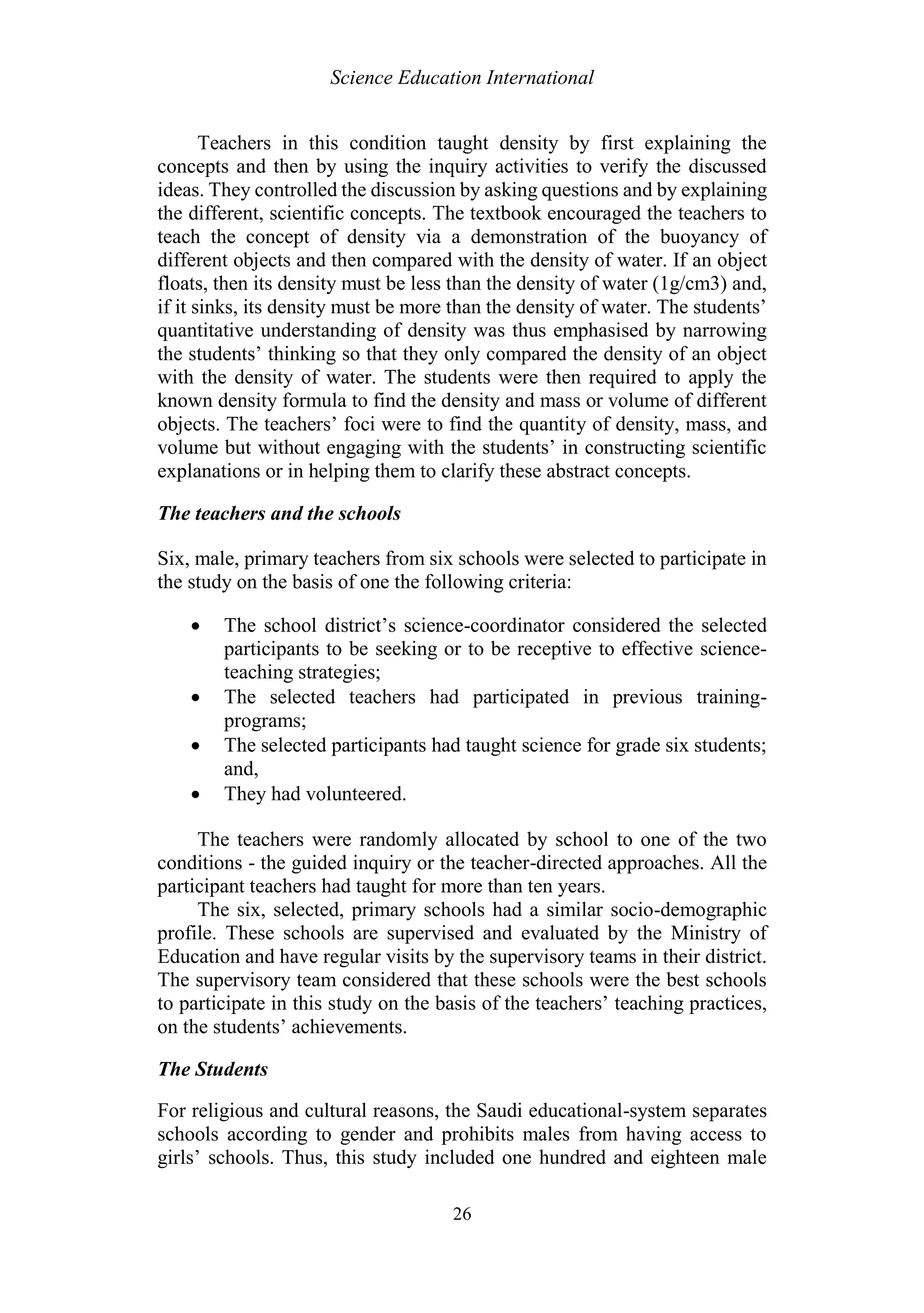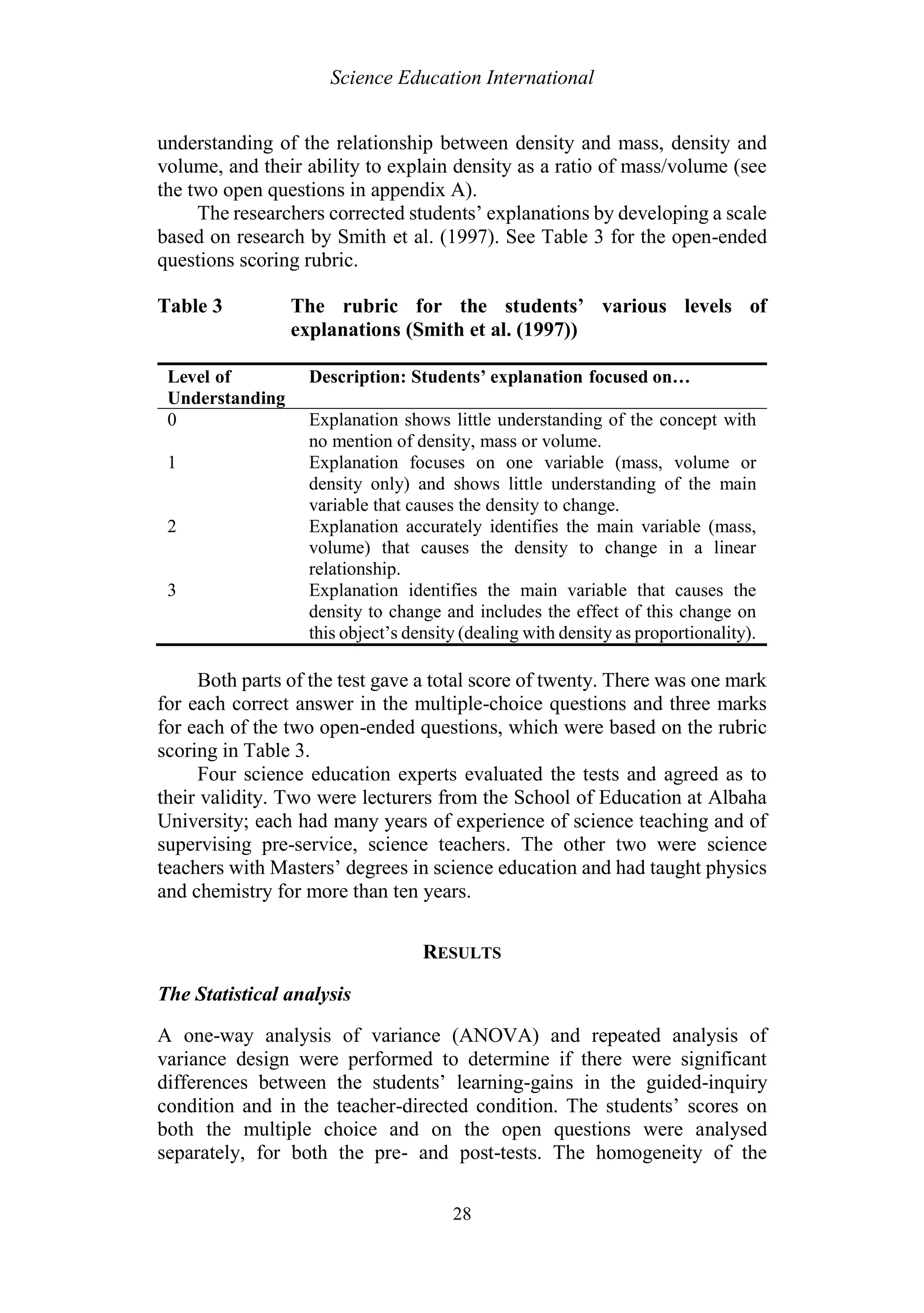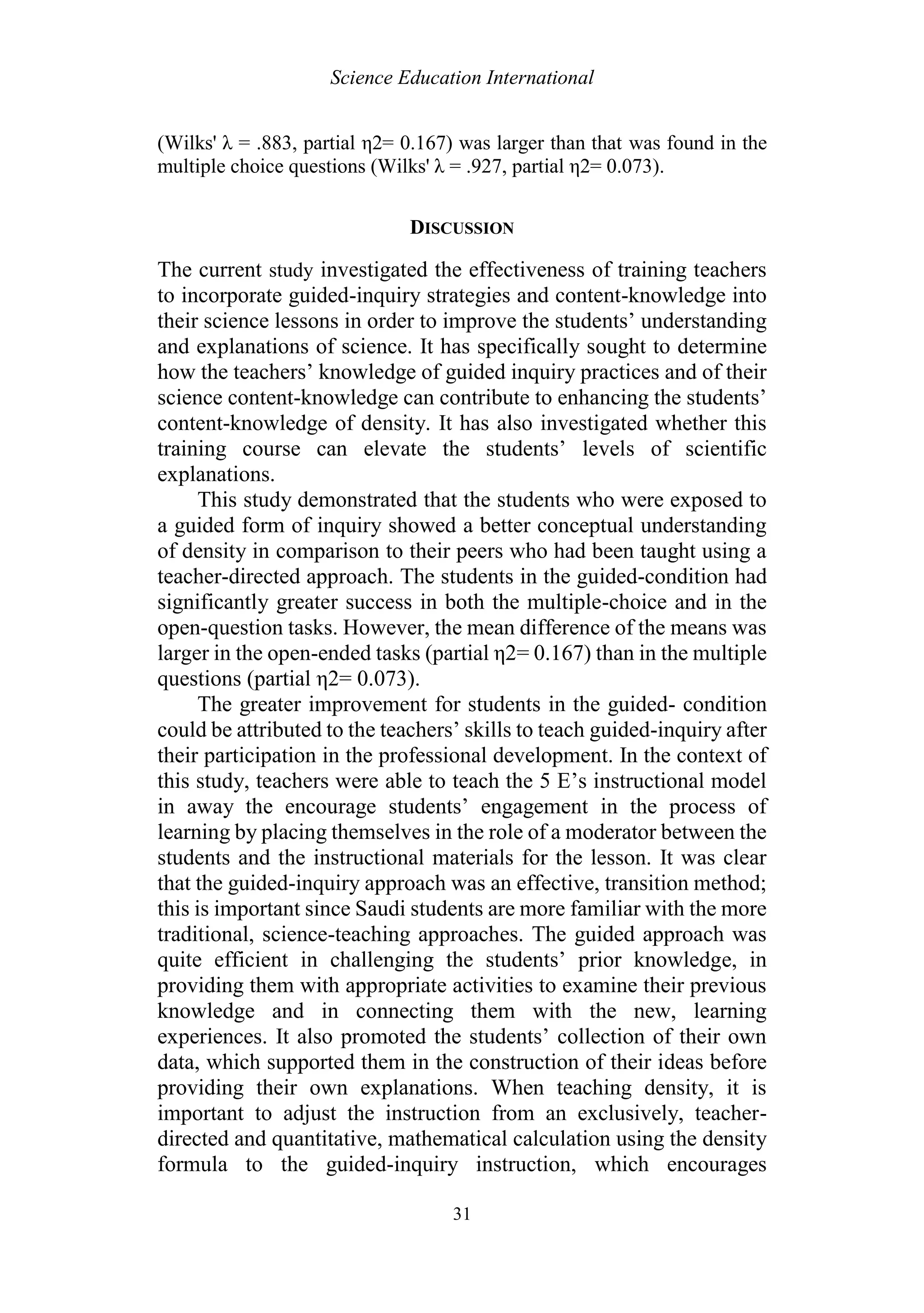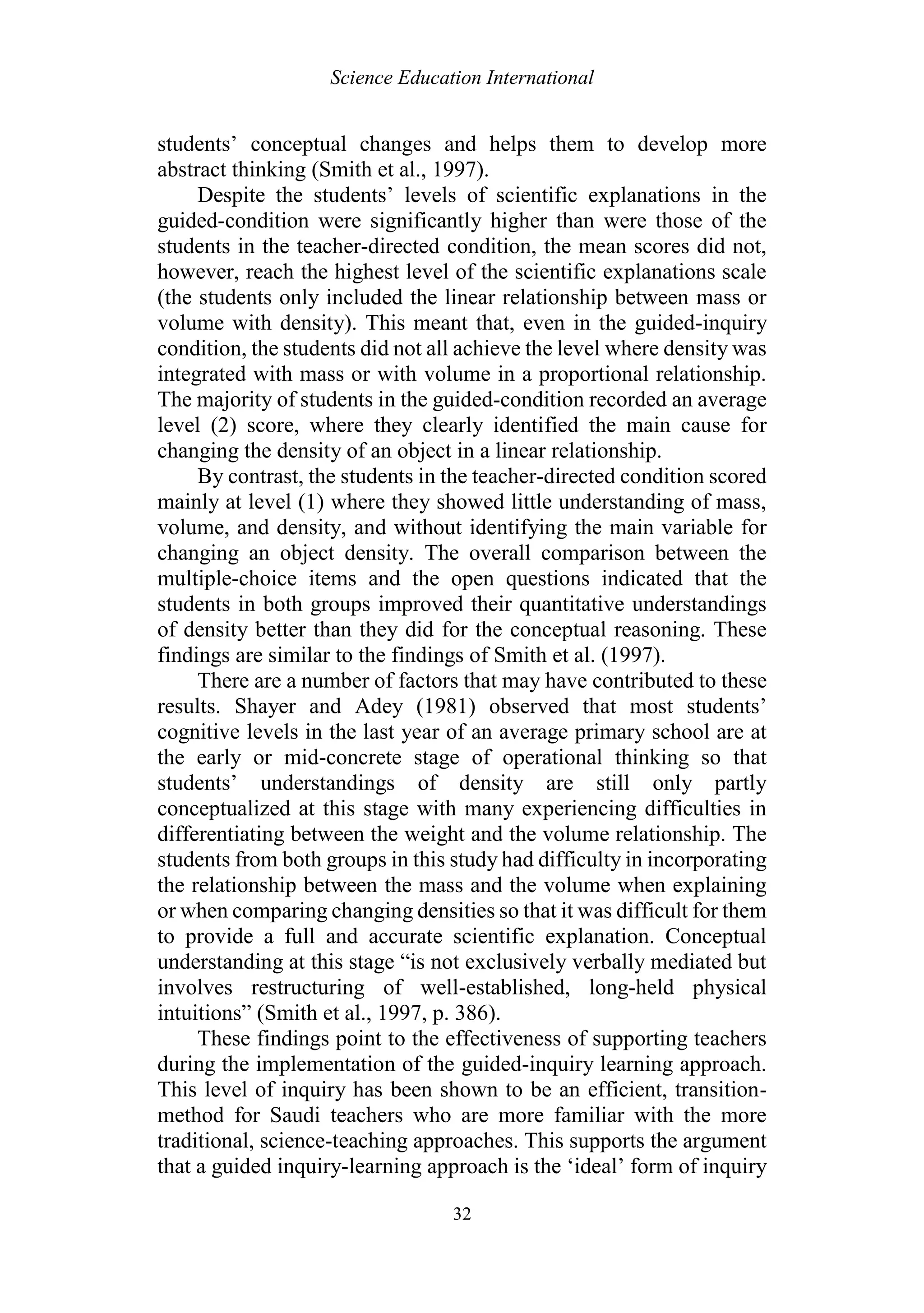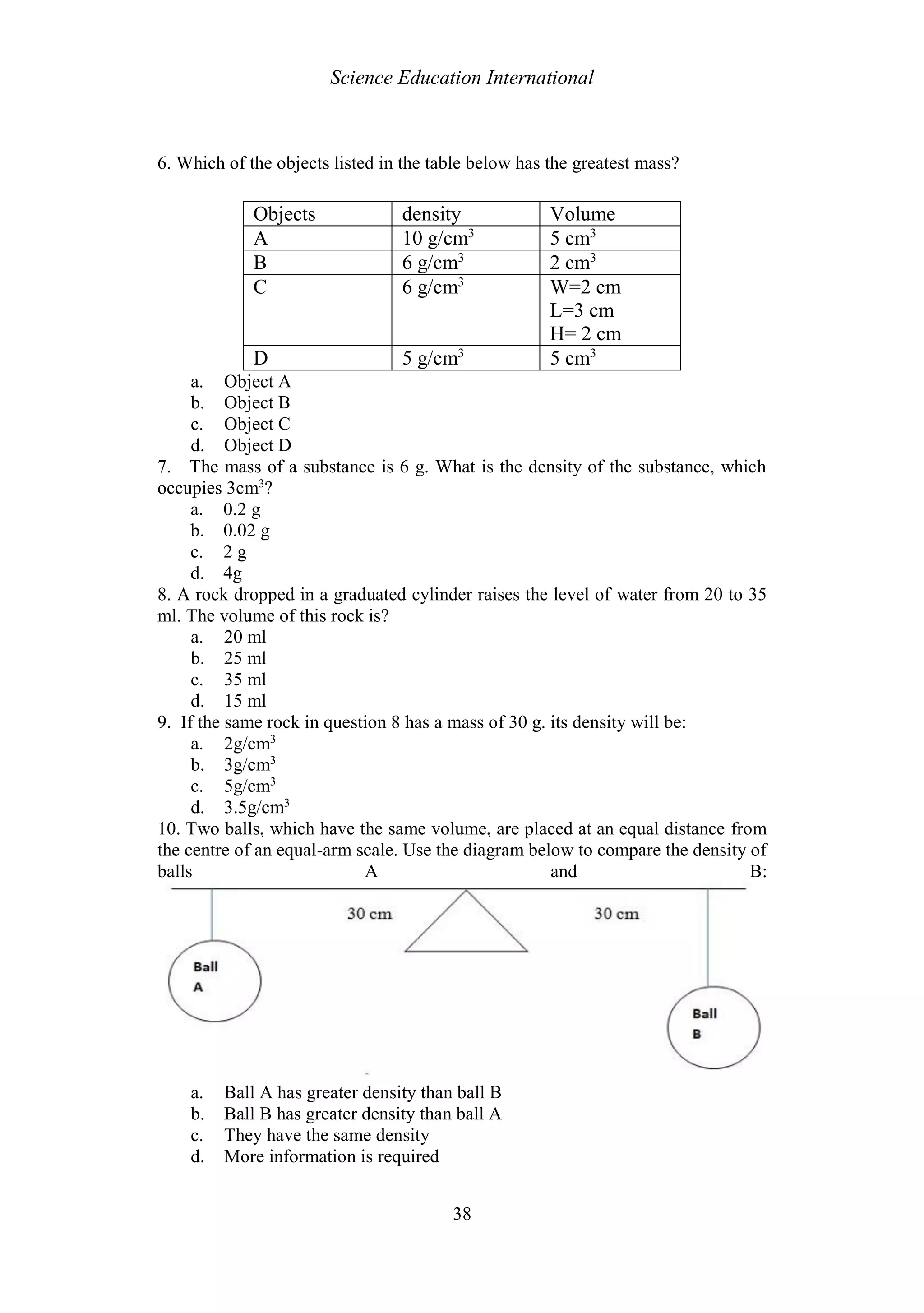This study compared the effectiveness of a guided inquiry-based professional development program versus a traditional teacher-directed approach in improving Saudi students' understanding of density. 107 sixth-grade students were randomly assigned to classes with teachers who received either guided inquiry training or no additional training. Students in guided inquiry classes showed significantly greater gains in conceptual understanding and explanation of density concepts compared to the teacher-directed group.








